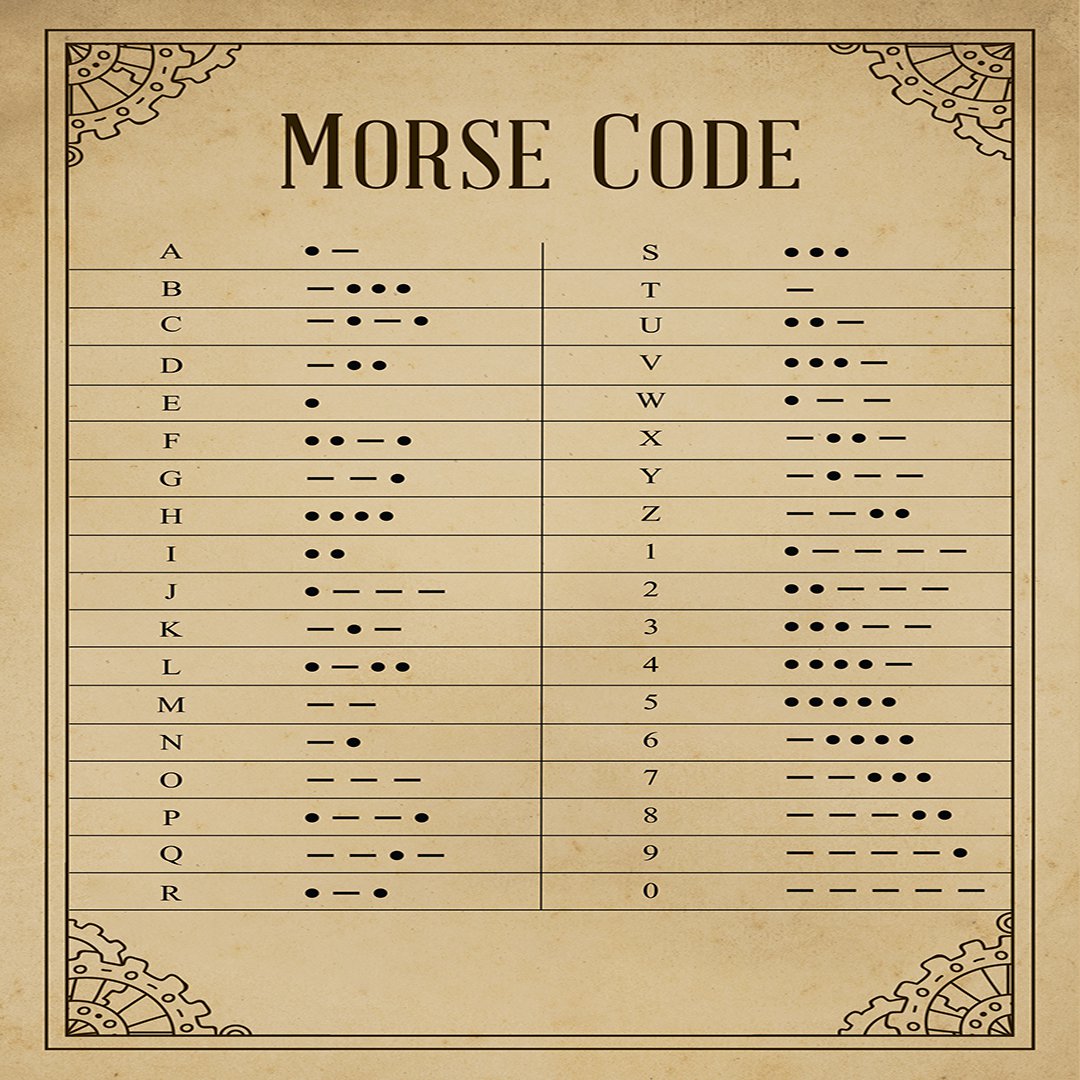Innovative Communications Tech: The Telegraph
When the telegraph was invented in 1835, sending messages was really expensive, so writers were always looking for ways to shorten their notes. OMG! Sounds like a practice we’d l8r adopt on our cellphones, lol!
Steampunk principles say that in order to be a successful innovator, we need to look to the past, present and future. So, let’s explore the telegraph and learn how it helped shape communication technologies!
A Shrinking World
.- / ... .... .-. .. -. -.- .. -. --. / .-- --- .-. .-.. -..
Prior to the invention of the telegraph, information traveled slowly. News was limited to what people could share by mail and word of mouth. Samuel Morse’s telegraph was a revolutionary communications tool because it could share information quickly across long distances.
Using an easy-to-learn binary code of dots and dashes called Morse code, messages could be sent nearly instantaneously through long-distance wires that were buried underground or strung up like telephone cables. Due to their incomparable speed, telegraphs were critical in expanding business, improving diplomacy and communicating in wartime.
Did you know: a telegraph is the device that sends a message, while a telegram is the message itself. Telegrams can also be called a wire.
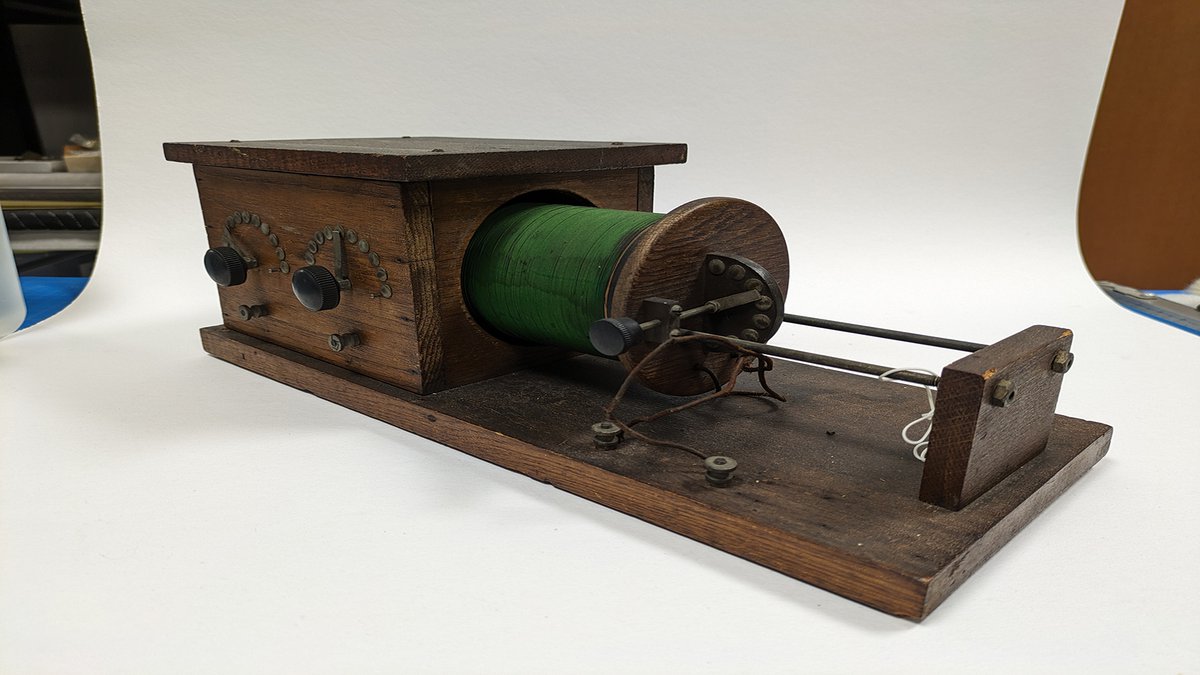
From the Science Museum’s collection: Radio telegraph arc transmitter from the early 20th century. Used in communication for RF&P, which operated out of Broad Street Station before the train depot closed and the building was turned over to the Science Museum of Virginia.
How does the telegraph work?
.... --- .-- / -.. --- . ... / - .... . / - . .-.. . --. .-. .- .--. .... / .-- --- .-. -.- ..--..
Morse’s original telegraph design included a contact for each letter, like a keyboard, that could be touched to send the appropriate number of dots and dashes. Later, Alfred Vail developed a much simpler system called a key. Need a visual? Let’s use an example telegraph we built in The Forge!
A telegraph consists of a transmitter and a receiver. The transmitter uses a battery to supply an electric charge and contains the key for completing the circuit. The receiver is connected to the transmitter with wires and contains an electromagnet and metal armature to tap out the messages. A telegraph sends messages by making and breaking an electrical connection.
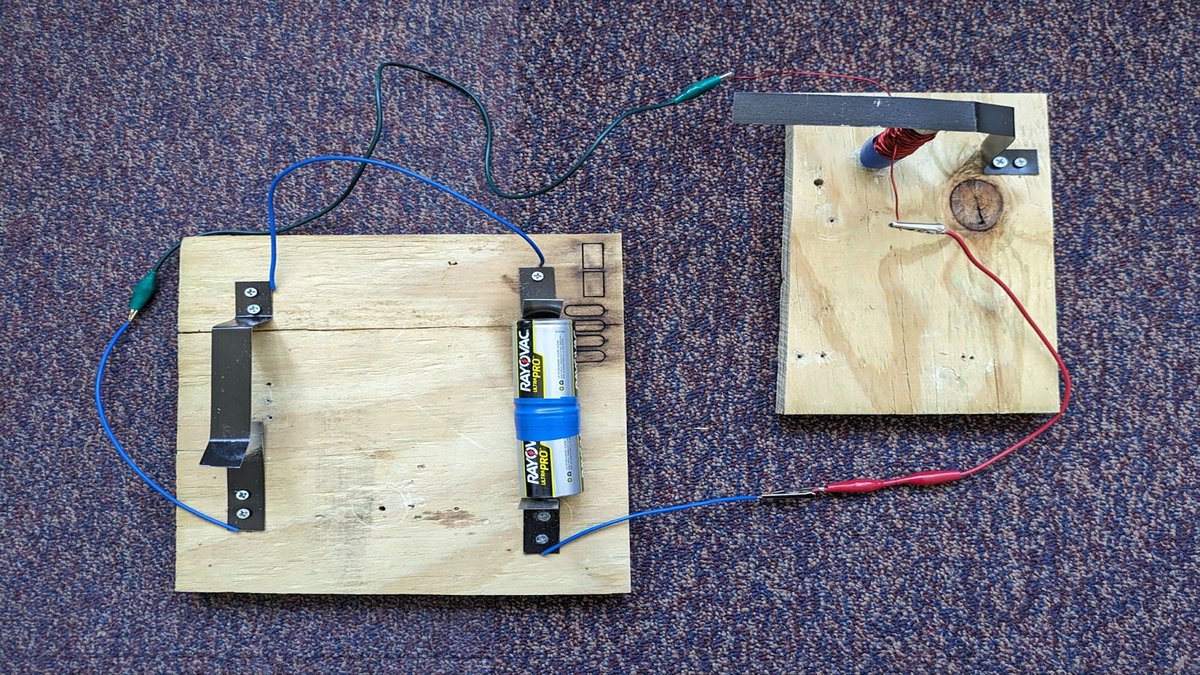
Telegraph built in The Forge, with the transmitter on the left and receiver on the right.
When the telegraph key is pushed down to touch the other metal piece, it connects the circuit and powers the electromagnet on the receiver. The electromagnet then pulls the magnetic metal armature above it down, making a clink noise. By releasing the key, the circuit is broken and the electromagnet releases the metal on top. Therefore, the message tapped out on the transmitter key is copied on the receiver’s electromagnet and armature.
In a more robust version of a telegraph, the electromagnet would pull down an armature connected to an ink roller, making marks of Morse code on a strip of paper. Someone trained in Morse code would then need to decode the messages and provide the recipient with a telegram using the alphabet instead of dots and dashes.
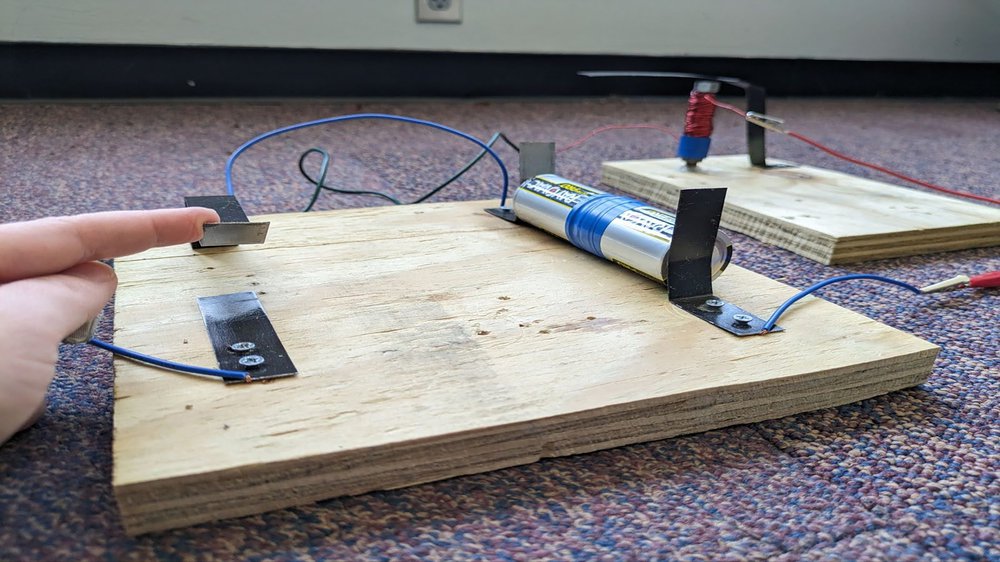
Left:Transmitter in the foreground showing an incomplete circuit, with receiver armature in the background hovering above electromagnet.
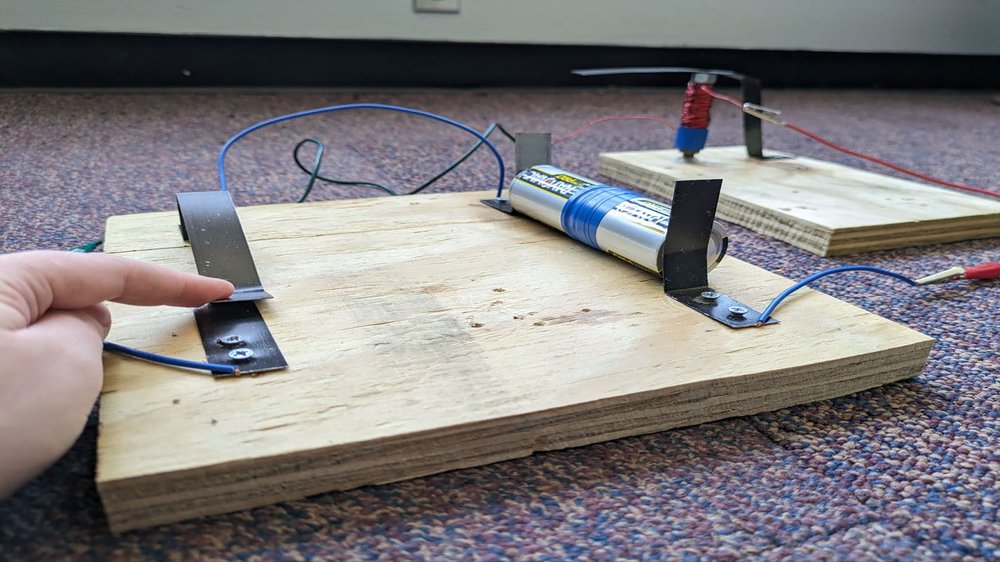
Right: Transmitter in the foreground showing a completed circuit (key pressed down), with receiver armature in the background pulled down by the electromagnet.
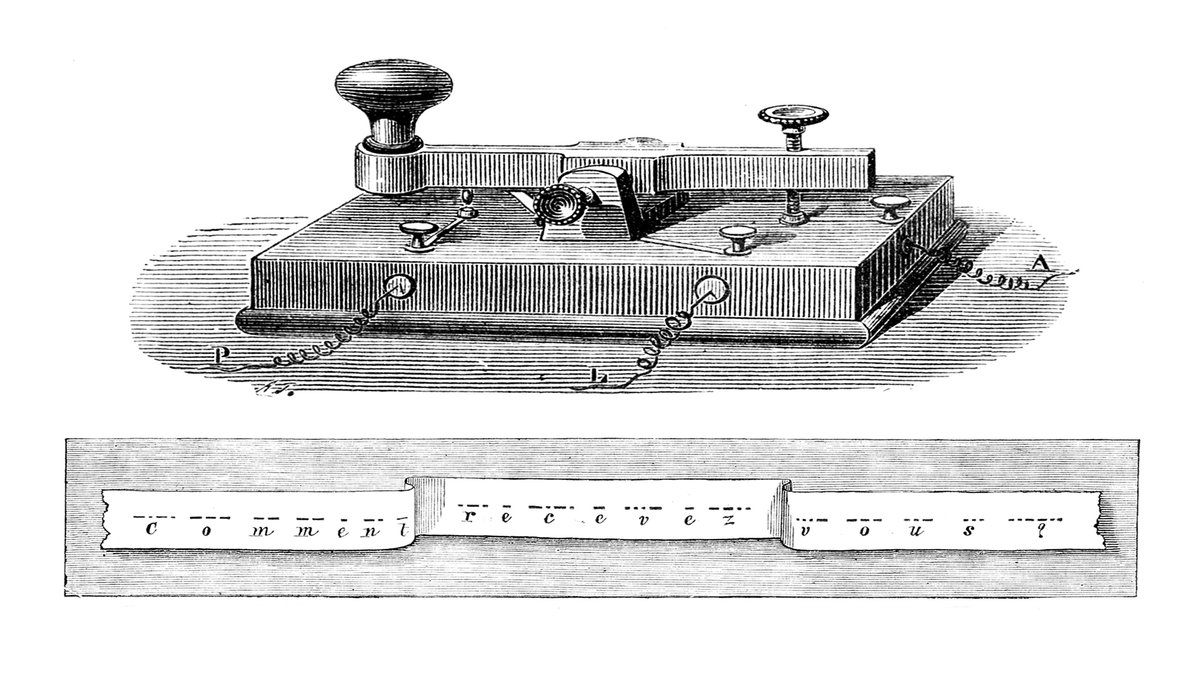
Dashing Dots
-.. .- ... .... .. -. --. / -.. --- - …
From telegraphs to telephones, from pagers to AIM, from telegrams to texts: who knows what’s next, but let’s not forget where we came from!
Using the Morse code sheet below, how quickly can you text your friends a secret message?
